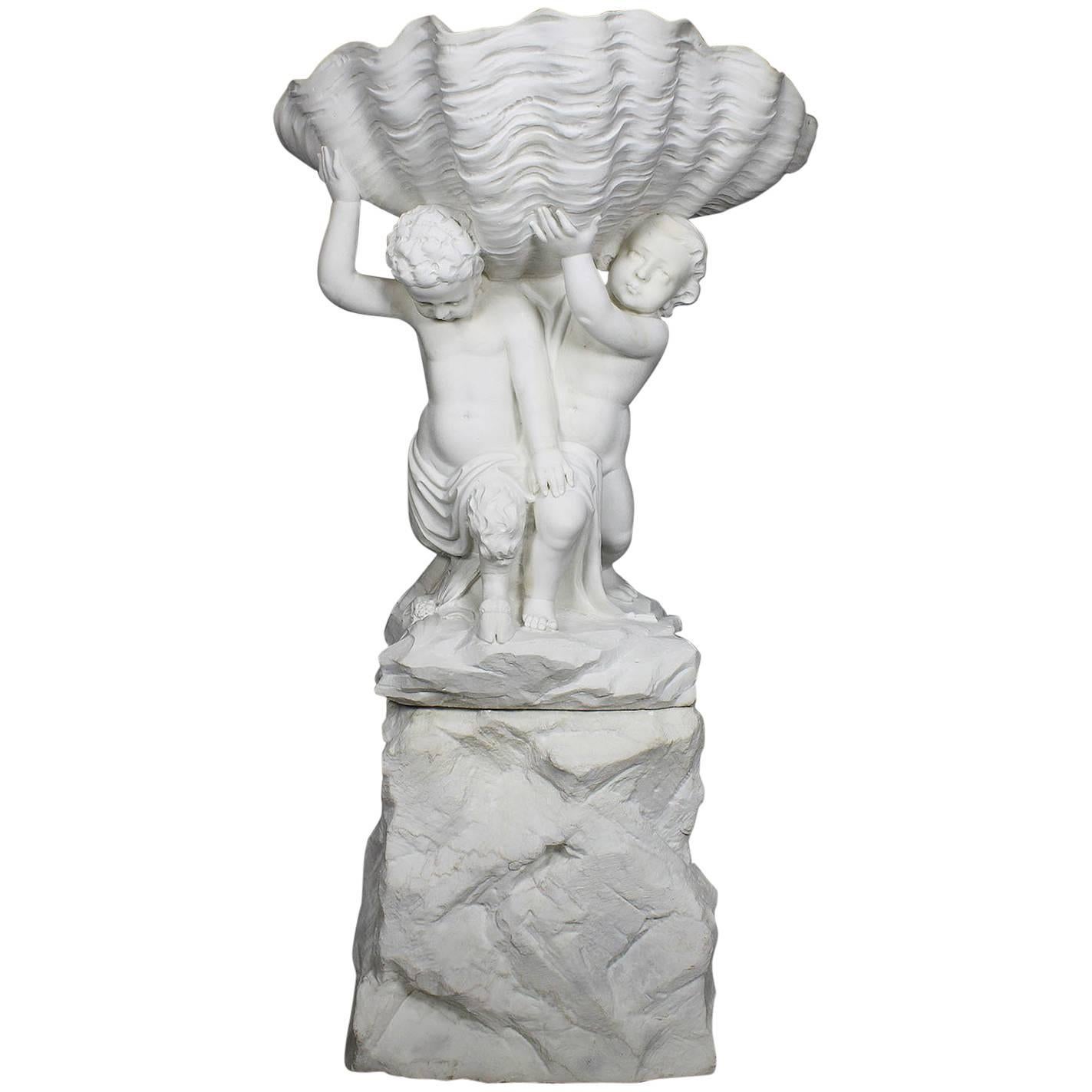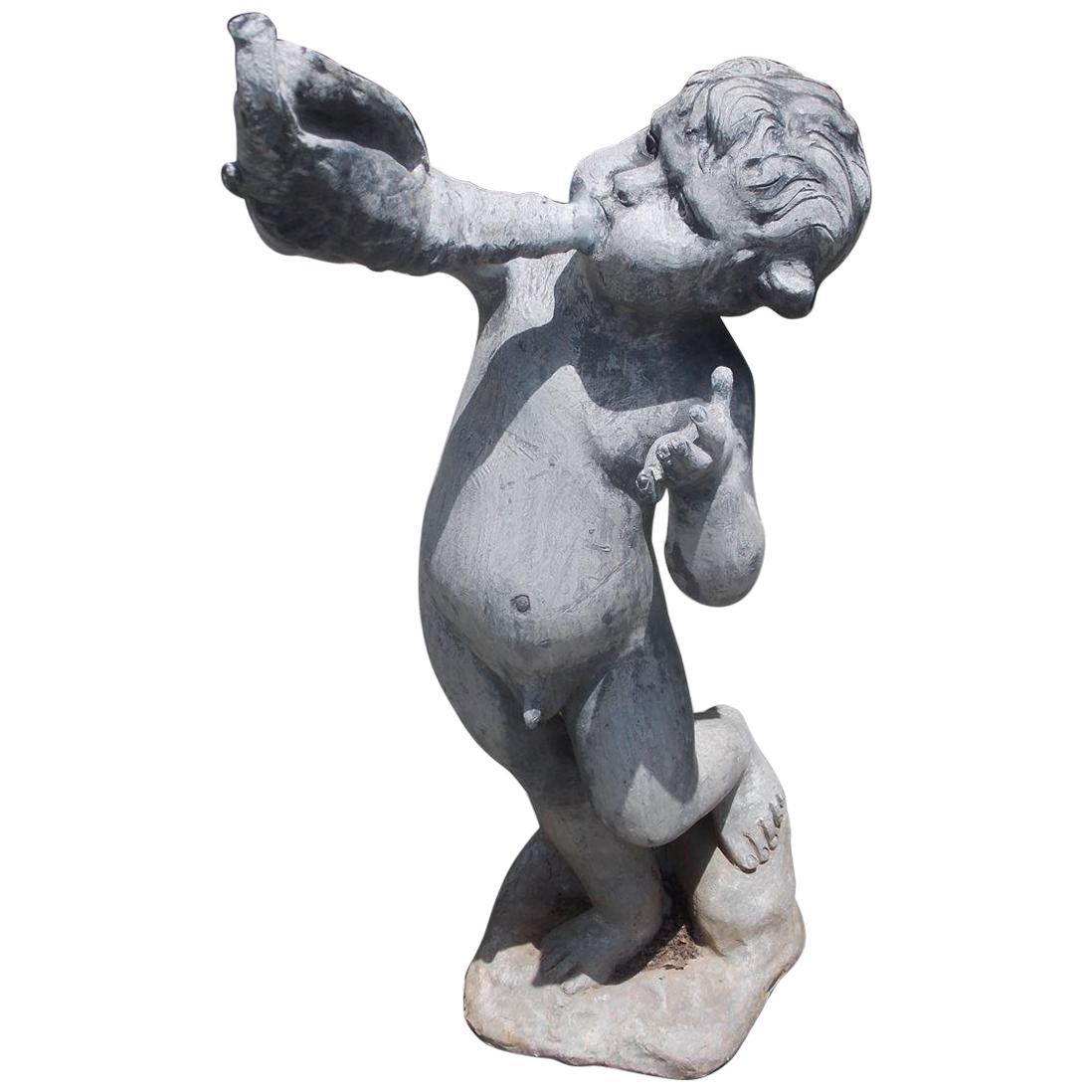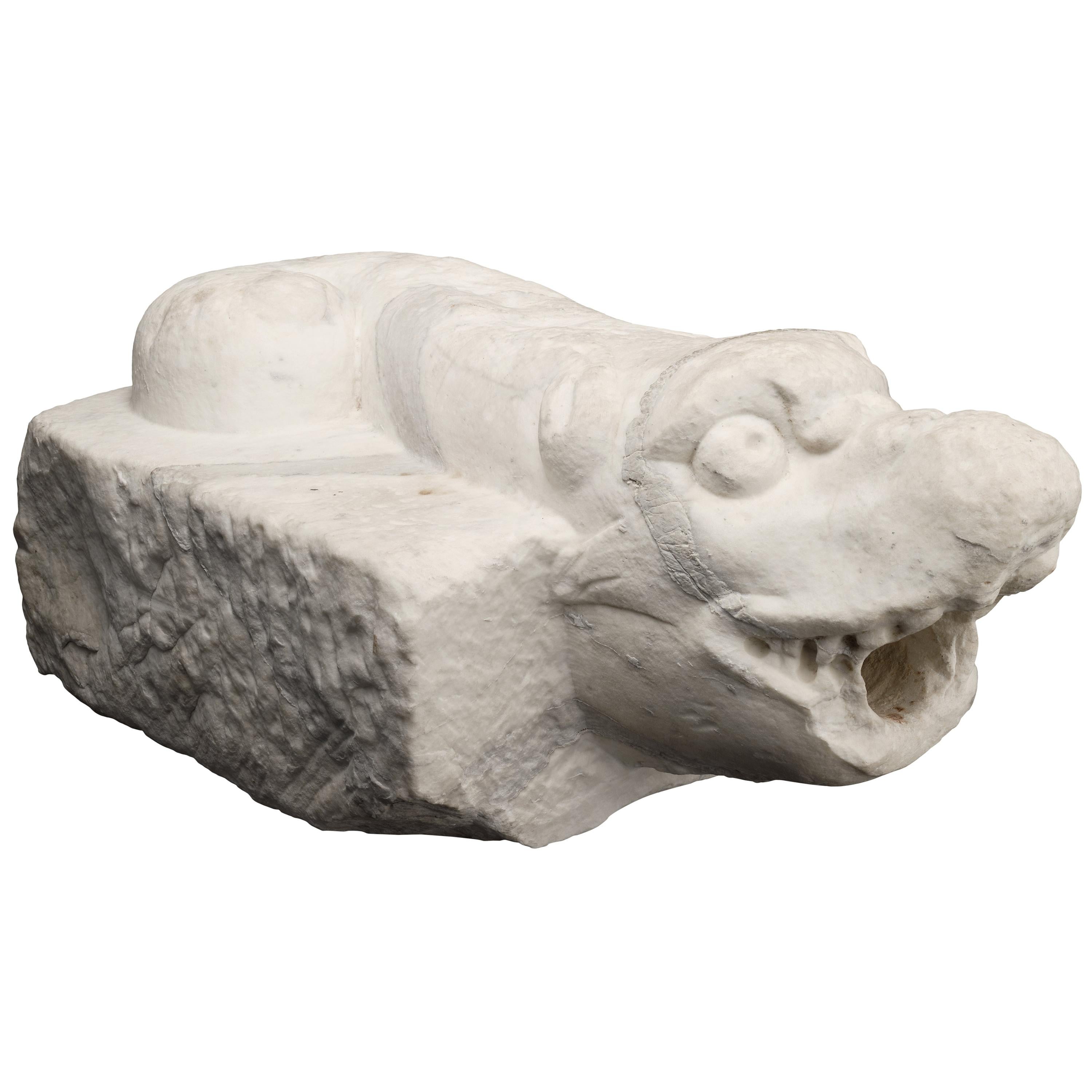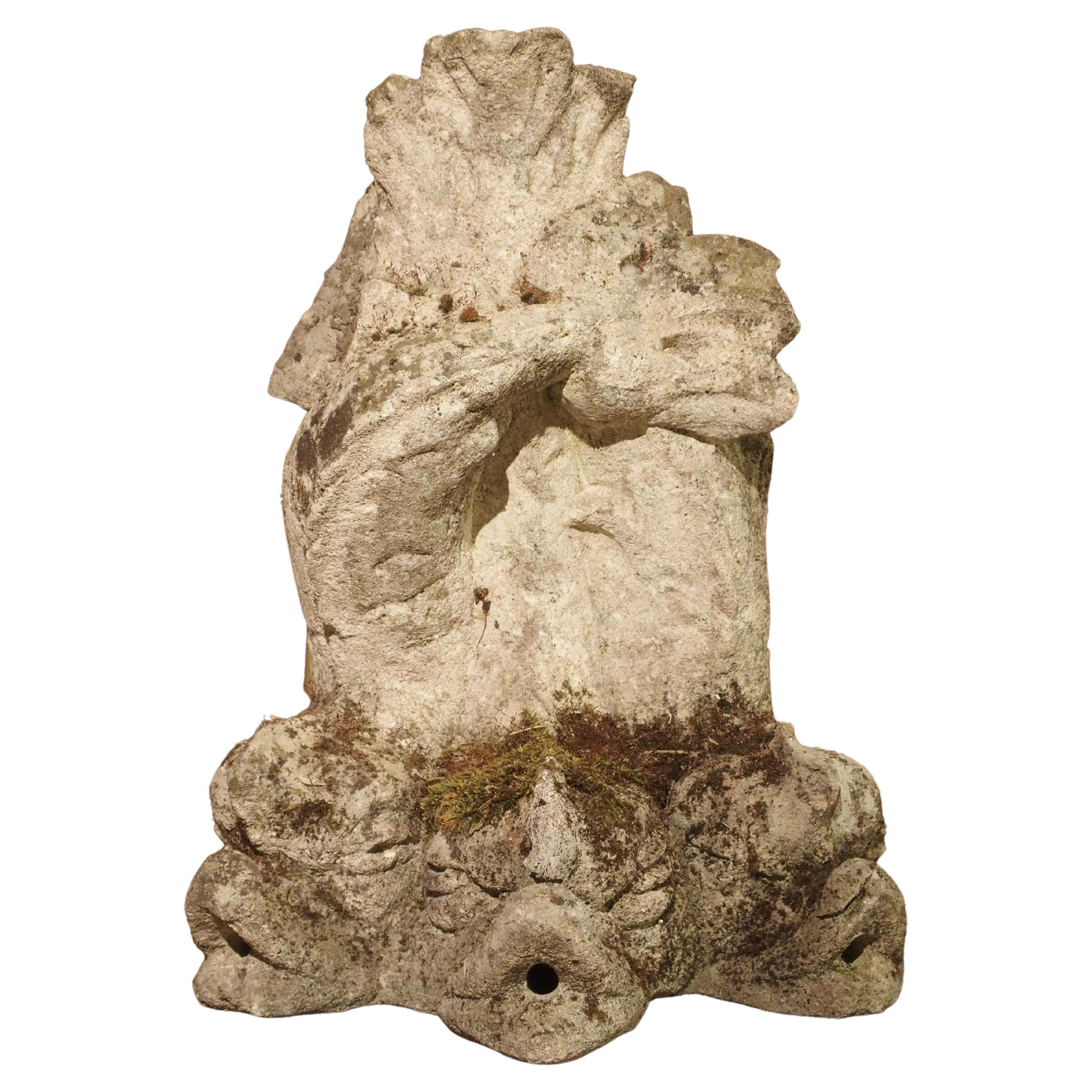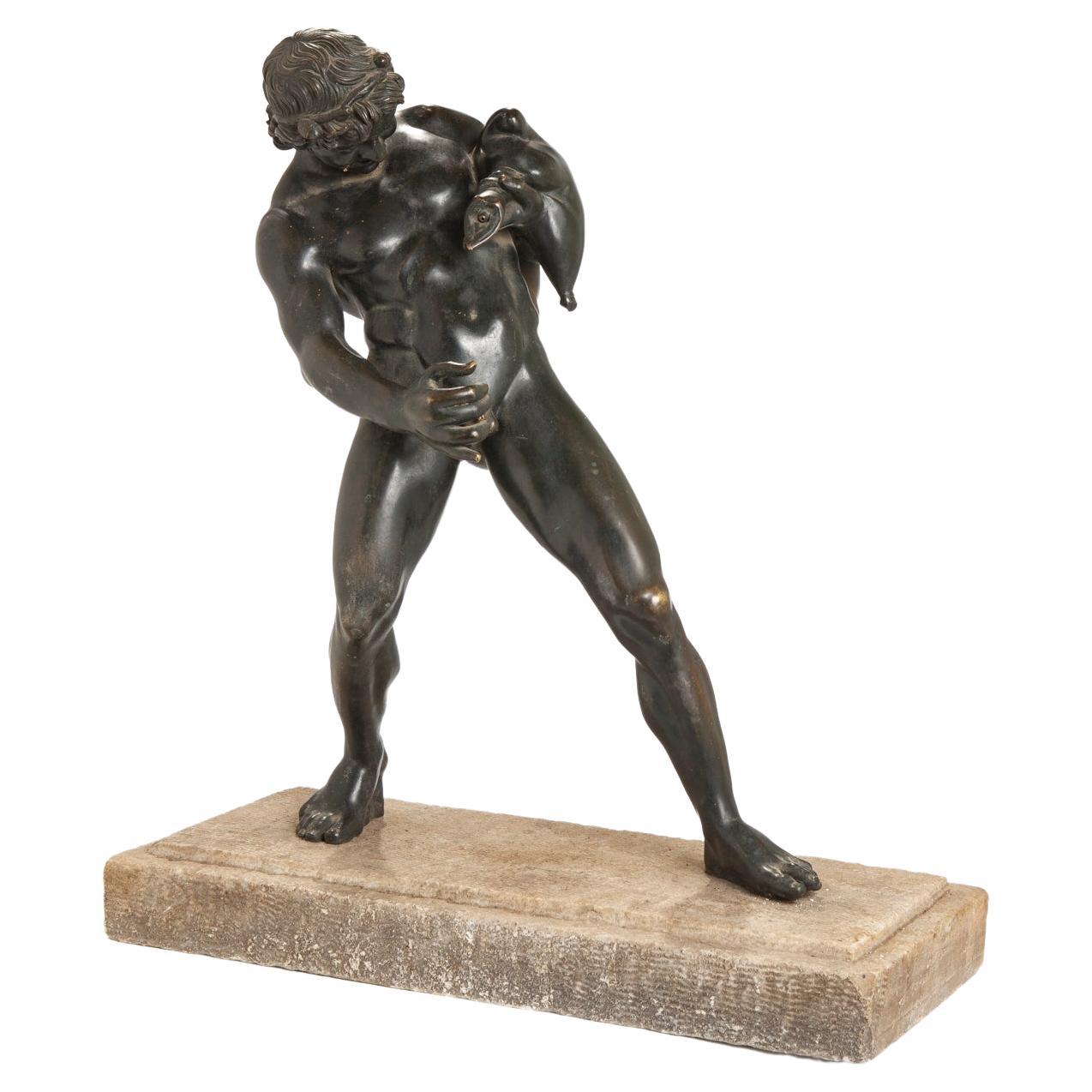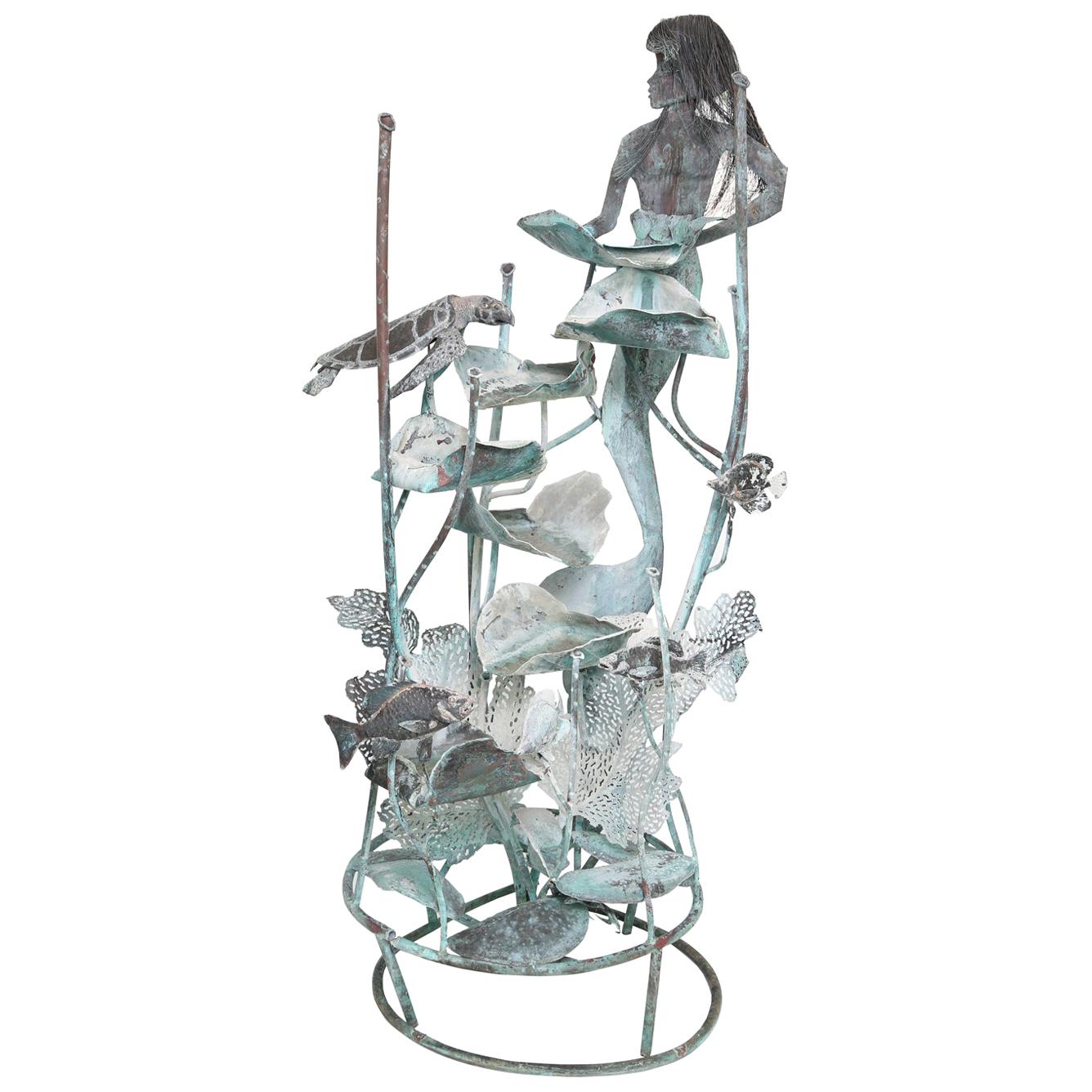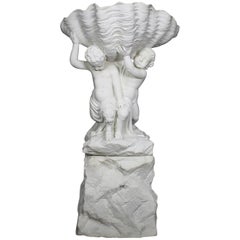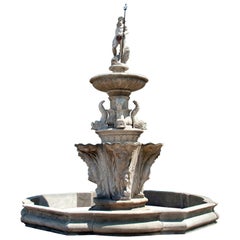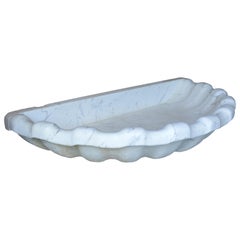
Gigantic Italian Carrara Shell / Fountain, circa 1950
View Similar Items
1 of 12
Gigantic Italian Carrara Shell / Fountain, circa 1950
About the Item
- Dimensions:Height: 13.78 in (35 cm)Width: 71.66 in (182 cm)Depth: 37.41 in (95 cm)
- Materials and Techniques:
- Place of Origin:
- Period:
- Date of Manufacture:1940
- Condition:Wear consistent with age and use.
- Seller Location:Sint-Kruis, BE
- Reference Number:1stDibs: LU2548315064671
You May Also Like
- Italian 19th Century Carved Carrara Marble Figural Fountain Jardinière PlanterBy Giovanni Battista LombardiLocated in Los Angeles, CAA very fine Italian 19th century carved Carrara marble figural fountain "Jardinière" modelled as a standing Putto and a Satyr supporting a sea-sh...Category
Antique 19th Century Italian Baroque Figurative Sculptures
MaterialsCarrara Marble
$29,850 Sale Price33% Off - 19th Century Large Circular Garden Fountain Neptune, Italian Limestone FountainLocated in West Palm Beach, FLMonumental antique Italian three-tiered garden fountain. Four Cariatidi surround the center base raising the water which spells from the waved shells. The second tier is supported by...Category
Antique Early 19th Century Italian Baroque Fountains
MaterialsLimestone
- 20th Century Italian Stone Fountain MaskLocated in Milan, ITThis antique stone mask was probably used in a fountain. It is a very decorative Italian antique object. The mask fits as decorative object on a bureau o...Category
Early 20th Century European Classical Roman Animal Sculptures
MaterialsStone
- English Figural Lead Fountain with a Young Man Blowing on a Conch Shell, C. 1850Located in Hollywood, SCEnglish figural lead fountain with a young man blowing a conch shell while standing on a rocky plinth. Fountain is in working condition, Mid-19th century.Category
Antique 1850s English William IV Fountains
MaterialsCopper, Lead
- Italian Ancient Marble Sculpture Fountain, Late 16th CenturyLocated in Milano, ITSea monster Carrara marble mouth fountain Italy, late 16th century It measures 13.8 x 31.5 x 18.9 in (35 x 80 x 48 cm) State of conservation: some small evident gaps and widespread signs of wear due to outdoor exposure. The gray marks crossing it do not come from restoration, but are rather the natural veins of the marble. This work has some morphological characteristics typically associated with the iconography of the sea monster: an elongated muzzle, sharp teeth, protruding eyes, elongated ears, and a coiled serpent's tail. An in-depth series of studies on artistic depictions of the sea monster attempted to verify how this symbol evolved in antiquity in the European and Mediterranean contexts and how it gradually changed its image and function over time. The iconography itself is mutable and imaginative and its history is rich with cultural and artistic exchange, as well as the overlapping of ideas. This occurred so much that it is difficult to accurately pinpoint the "types" that satisfactorily represent its various developments. However, we can try to summarize the main figures, starting from the biblical Leviathan and the marine creature that swallowed Jonah (in the Christian version, this figure was to become a whale or a "big fish", the “ketos mega”, translation of the Hebrew “dag gadol”). Other specimens ranged from the dragons mentioned in the Iliad (which were winged and had legs) to "ketos” (also from Greek mythology), the terrifying being from whose Latinized name (“cetus”) derives the word "cetacean". See J. Boardman, “Very Like a Whale” - Classical Sea Monsters, in Monsters and Demons in the Ancient and Medieval Worlds, in Papers presented in Honor of Edith Porada, Mainz am Rhein 1987, pp. 73-84). In Italy the monster underwent yet further variations: it can be found in Etruscan art on the front of some sarcophagi representing the companion of souls, while among the Romans we find the “Pistrice” (cited by Plinio in Naturalis Historia PLIN., Nat., II 9, 8 and by Virgilio in Eneide: VERG., Aen., III, 427), which appeared in the shape of a stylized hippocampus or a very large monstrous cetacean and evolved into a hideous being with a dragon's head and long webbed fins. During the Middle Ages, the sea monster was the object of new transformations: at this time, it is often winged, the head is stretched like a crocodile, the front legs are often very sharp fins - sometimes real paws - until the image merges with dragons, the typical figures of medieval visionary spirituality widely found throughout Europe (on this topic and much more, see: Baltrušaitis, J., Il Medioevo fantastico. Antichità ed esotismi nell’arte gotica, Gli Adelphi 1997). In Italy during the 15th and 16th centuries, the revival of classicism - representative of the humanistic and Renaissance periods - led to a different reading of these "creatures". Indeed, the sea monster was also to find widespread use as an isolated decorative motif, especially in numerous fountains and sculptures where dolphins or sea monsters were used as a characterizing element linked to water (on this theme see: Chet Van Duzer, Sea Monsters on Medieval and Renaissance Maps, London, The British library, 2013). From the morphological point of view, the "sea monsters" of this period are mostly depicted as hybrid figures, in which the body of a mythological or real being (a hippocampus, a sea snake, a dolphin), is joined to a head with a rather indistinct appearance. It was usually characterized by large upright ears, an elongated snout, sharp teeth and globular, protruding eyes; a complex and indefinite figure, both from the symbolic point of view and from that of its genesis. The work we are examining is placed as a cross between the medieval sea serpent and the Renaissance dolphin, with stylistic features which recall the snake as often used in heraldry (such as the "snake" depicted in the coat of arms of the Visconti - the lords and then dukes of Milan between 1277 and 1447 - and which, for some, may be derived from the representations of the “Pistrice” that swallowed Jonah). In the search for sources, Renaissance cartography and in particular woodcuts should not be neglected. See for example the monsters of Olaus Magnus, from the editions of the “Historia de gentibus septentrionalibus” (“History of the peoples of the north”) and the natural histories of Conrad Gesner, Ulisse...Category
Antique 16th Century Italian Renaissance Animal Sculptures
MaterialsCarrara Marble
- Antique French Stone Fountain Piece with Triple Dolphin Spouts, Circa 1900Located in Dallas, TXThis charming French fountain piece with triple dolphin spouts was made circa 1900. The dolphins are made from reconstituted stone, which is natural lim...Category
Antique Early 1900s French Fountains
MaterialsStone
Recently Viewed
View AllMore Ways To Browse
Carved Marble Fountain
Shell Fountains
Italian Marble Garden Fountain
Fountain Fountain Sink
1950 Carved Shell
Vintage Style Sinks
Vintage Style Sink
White Marble Fountain
Hand Carved Marble Sink
Ancient Fountains
Vintage White Sink
Shell Sink
Classical Marble Sink
Classical Carved Marble Sink
Blue And White Sink
Shell Sinks
Carved Sink Shell
Marble Shell Sink
